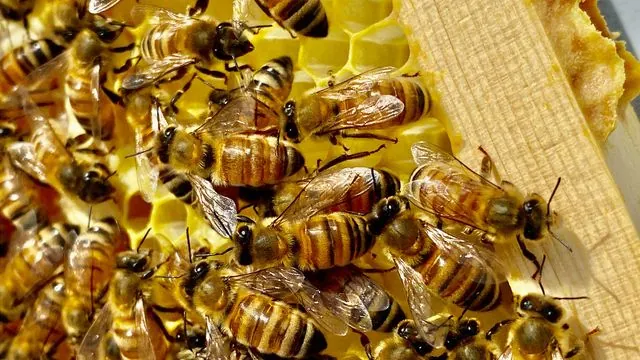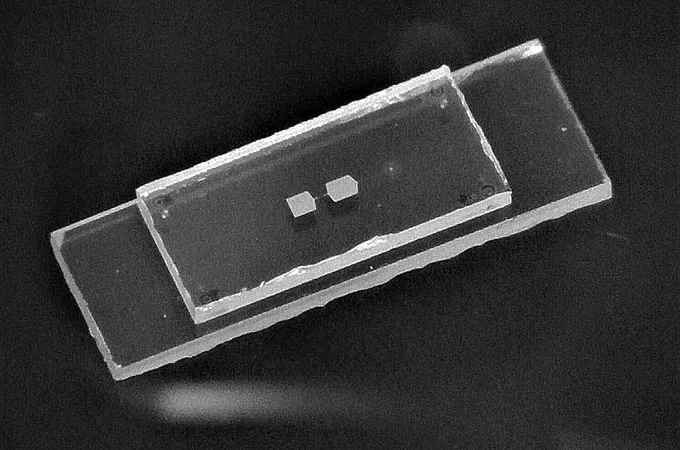
Unraveling the Secrets of Worker Bee Behavior: The Role of the Doublesex Gene
2024-11-04
Author: Noah
Introduction
A groundbreaking study from Heinrich Heine University Düsseldorf (HHU) in collaboration with researchers from Frankfurt, Oxford, and Würzburg has shed light on the genetic foundations of the intricate social behaviors exhibited by honey bees (Apis mellifera). Published in the esteemed journal Science Advances, the research reveals how the doublesex gene (dsx) plays a crucial role in determining worker bee behavior, a finding that could have far-reaching implications for our understanding of social insects.
The Importance of Social Behavior
In the animal kingdom, social behavior is key to survival, allowing species to work together in collective tasks such as foraging for food, defending against predators, and rearing young. Honey bees exemplify a highly cooperative society where thousands of worker bees act as a cohesive unit, often referred to as a "superorganism." Each bee contributes to the colony’s success by protecting it, feeding it, and caring for its larvae.
Insights from the Researchers
According to Professor Dr. Martin Beye, the head of the Institute of Evolutionary Genetics at HHU and senior author of the study, this research marks a significant advancement in our comprehension of how complex behaviors are genetically inherited rather than learned. Dr. Beye notes, "Until now, the precise genetic encoding of such intricate behaviors remained a mystery."
Doublesex Gene and Worker Bee Tasks
Working closely with their fellow researchers, Dr. Beye and lead author Dr. Vivien Sommer found that the dsx gene is responsible for defining specific behaviors among worker bees. Dr. Sommer explained, "This gene controls whether a worker bee engages in certain tasks and dictates the duration of these activities, which includes not just caring for larvae, but also foraging and sharing information about food sources."
Research Methodology
To explore the effects of the dsx gene, the researchers employed CRISPR/Cas9 technology to modify or disable the gene in select bees. They attached QR codes to the altered bees and meticulously monitored their actions in the hive using video cameras. This footage was then analyzed with the help of artificial intelligence, which allowed the researchers to map out distinct behavioral patterns.
Behavioral Changes Observed
"Our main inquiry centered around whether the alterations to the dsx gene resulted in observable changes in inherited behavioral traits. We anticipated that these modifications would manifest within the worker bees’ nervous systems, where such behaviors are regulated," said Dr. Sommer.
Neuronal Pathways
Additionally, the researchers introduced green fluorescent protein (GFP) into the dsx sequence, enabling them to visually track the neuronal pathways created by the dsx gene within the bees' brains through fluorescence microscopy. "This approach allowed us to pinpoint how the dsx gene influences the neural circuits that define the inherited behaviors of honeybees," noted doctoral researcher Jana Seiler, a co-author of the study.
Significance of Findings
The findings underscore a vital genetic framework that governs both the neurological connections and behaviors of worker bees. Professor Dr. Wolfgang Rössler, who led the behavioral physiology aspects of the study at the University of Würzburg, asserted, "Our work lays the groundwork for understanding the fundamental genetic programming that underlies bee behavior."
Future Research Directions
The research team aims to further their exploration by shifting focus from individual bees to the functioning of the entire hive as a collective entity. Doctoral researcher Alina Sturm from HHU expressed optimism about future discoveries, stating, "Our goal is to elucidate the connection between individual genetic programming and the synchronized behavior of the whole colony."
Implications for Conservation and Agriculture
This significant advancement in our understanding of genetics and behavior in social insects not only enriches scientific knowledge but also holds potential implications for bee conservation efforts and agriculture, given the critical role of honey bees in pollinating crops. As researchers continue to delve deeper into the genetic blueprints of these remarkable creatures, the mysteries of their world may soon be unraveled further.
Conclusion
Stay tuned for more updates on this fascinating journey into the lives of honey bees, the unsung heroes of our ecosystem!









 Brasil (PT)
Brasil (PT)
 Canada (EN)
Canada (EN)
 Chile (ES)
Chile (ES)
 España (ES)
España (ES)
 France (FR)
France (FR)
 Hong Kong (EN)
Hong Kong (EN)
 Italia (IT)
Italia (IT)
 日本 (JA)
日本 (JA)
 Magyarország (HU)
Magyarország (HU)
 Norge (NO)
Norge (NO)
 Polska (PL)
Polska (PL)
 Schweiz (DE)
Schweiz (DE)
 Singapore (EN)
Singapore (EN)
 Sverige (SV)
Sverige (SV)
 Suomi (FI)
Suomi (FI)
 Türkiye (TR)
Türkiye (TR)